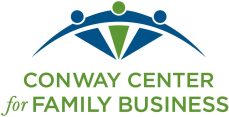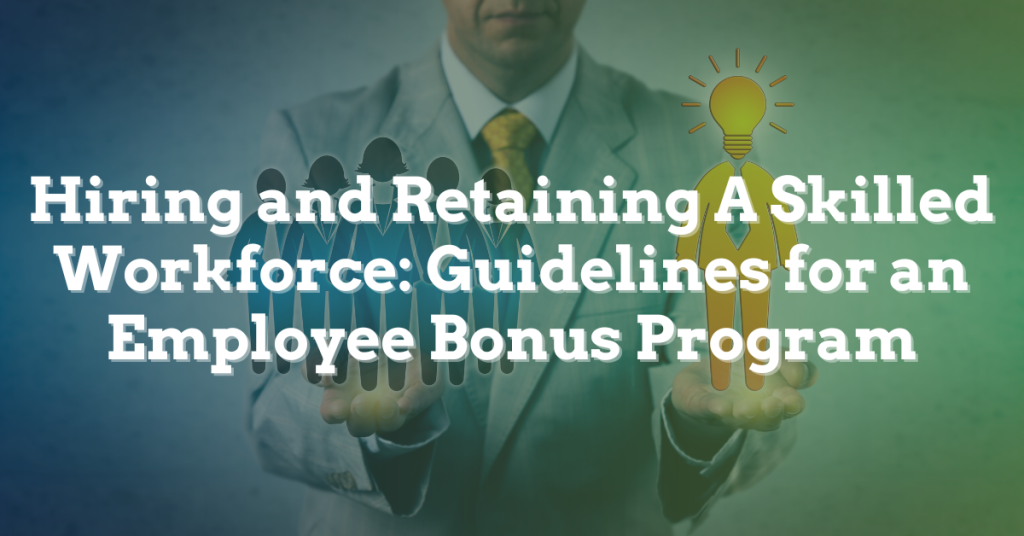In our conversations with manufacturers, we often hear that workforce hiring and retention is their greatest stressor in this post-COVID era. Many manufacturing companies share the challenge of finding workers who are willing and able to perform the skills necessary to fill open positions. Scroll news feeds, read industry information, or listen to podcasts from business think tanks like the Brookings Institute or the US Chamber of Commerce. They all boil this workforce challenge down to one basic idea: We need more better-skilled workers and better-paying jobs.
But how long will it take to find, train, and rebalance our skilled labor force in this country—or your workforce in your town? A few years? A decade or more? And given this workforce shortfall, how can you differentiate your business from those competing for your workforce—and how can you do it now?
Employee bonus program
An option we discuss in this article, creating and implementing an employee bonus program, assumes you are already providing competitive wages, competitive fringe benefits, proper internal training, and a positive work environment. If you are struggling to keep up in these areas, you should work on them first, because no employee bonus program will be able to cover up for shortfalls in the essentials of a healthy work environment. This program is about helping good companies become great companies. It is about developing a long-term, skilled, and dedicated workforce so you can manage your business into the coming years.
The following information does not intend to provide an entire framework of an employee bonus program to plug into your business. Instead, it provides considerations for customizing a bonus program that accommodates your unique circumstances and needs.
Considerations and calculations
So what might a performance-based employee bonus program look like?
First, it must accommodate what you need as an owner. You take the risk of operating your business, the responsibility of assuring there is a future for your business and therefore your employees’ employment. That justifies a return on the investment you have made in your business, including your ongoing investment in the technology your business needs to remain competitive: equipment, tooling, software, IT upgrades, and more. Those needs should be woven into your employee bonus program as current and future priorities.
The performance-based employee bonus program discussed here is essentially a variation of a traditional profit-sharing plan. It can be discretionary or non-discretionary. We generally recommend a discretionary plan but one that includes sufficient structure to be understood as thoughtful and intentional. It can be a quarterly or annual exercise, but in today’s world an annual bonus might not have the same positive impact on your workforce as a quarterly one, even though they total out the same. And it should include financial benchmarks that must be met to turn on the bonus calculation.
The bonus calculation is determined and controlled by you. As a first priority, as mentioned above, the plan should include a calculated return on investment for the owner. The technology reinvestment commitment to the business should be based on calculated capital investment benchmarks. A third inclusion: your operating profitability modified by items like depreciation combined with the first two priorities to determine if there can be a workforce bonus for the period.
Once the available pool of funds for the bonus is determined, the allocation to individuals in the workforce can be calculated based on your predetermined methodology. You can determine your allocation method with your HBK advisor as the two of you work to define your operating profitability benchmark.
It is recommended that you openly communicate with employees about how your program works. Openly sharing company financial information with your workforce might be a concern, but sharing revenue results and targets, gross profit percentage results and targets, and other key performance benchmarks that impact whether bonuses will be paid allows you to be transparent with your workforce and helps them understand the bigger picture.
You can share as much or as little financial information with your workforce as you want. But consider that a big part of what you want to accomplish with the program is to build trust with your workforce to increase motivation, collaboration, healthy competition, and innovation, factors that will fuel the future success of your business. Sharing financial information at a new level may very well become your “new normal.”
Thank you to our friends at HBK CPAs & Consultants for providing this valuable information.
If you are interested in being featured on our Family Business Insights or have any questions please contact lflint@familybusinesscenter.com

